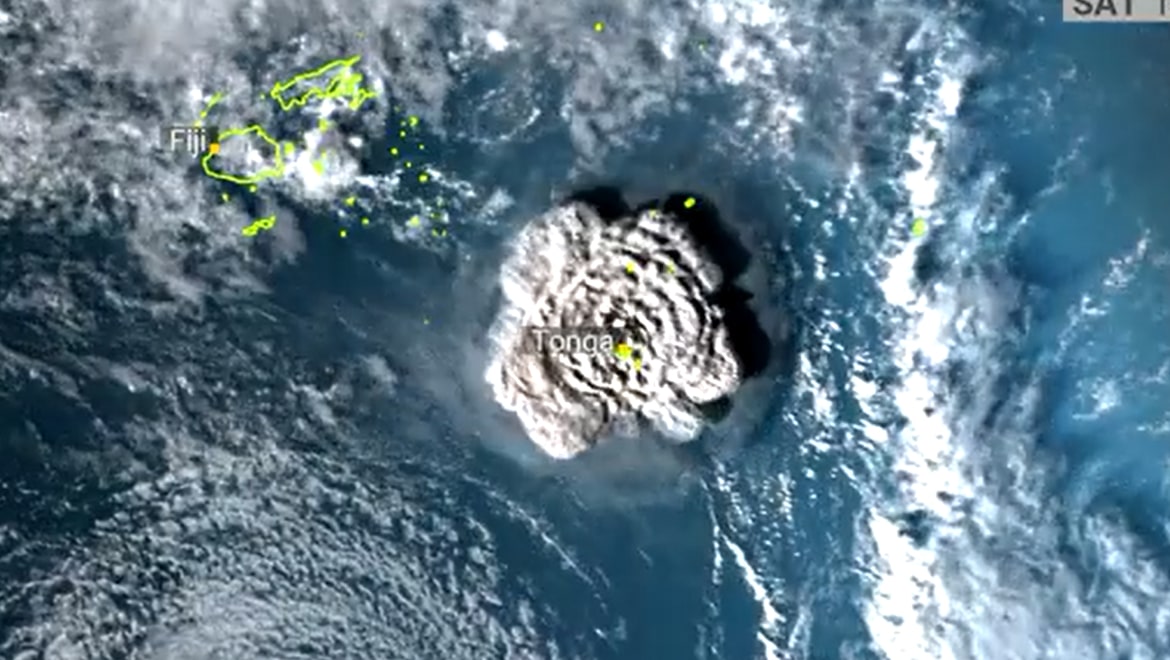
Airlines around the world were being forced to cancel flights due to huge volcanic ash clouds generated by an underwater volcano that erupted in Tonga over the weekend.
Fiji Airways appears the most affected, with seven flights cancelled out of the Australian cities of Sydney and Melbourne.
It comes after Tonga’s Hunga Tonga-Hunga Ha’apai underwater volcano erupted on 15 January, prompting tsunami warnings and evacuation orders of much of the Pacific Islands.
In a statement, Fiji Airways stated that it was required to cancel flights “due to hazardous operating conditions as a result of the ash cloud from the Hunga Tonga-Hunga Ha’apai volcanic eruption”.
“The decision follows extensive operational assessments (on 16 January) after receiving updates from authorities in the region on the movement of the volcanic ash cloud,” the airline said.
“Fiji Airways and Fiji Link thank passengers for their understanding and reiterate that the safety of our guests and crew is of paramount importance.”
The airline is currently working to rebook affected customers onto flights for Monday night.
In Australia, Virgin Australia, Jetstar, and Qantas have all also been forced to cancel flights to Fiji due to unsafe operating conditions caused by the ash cloud. Air New Zealand has also cancelled its Fiji passenger service.
High-resolution Himawari satellite imagery of the #HungaTongaHungaHaapai volcanic eruption in Tonga ?
Our climate stations recorded a brief spike in air pressure as the atmospheric shock wave pulsed across New Zealand. pic.twitter.com/BfLzdq6i57
— NIWA Weather (@NiwaWeather) January 15, 2022
Meanwhile, an Aircalin flight from Tokyo to Nouméa was diverted to Brisbane, Australia on Sunday night in light of the ash cloud, with all passengers sent into hotel quarantine in the Queensland capital while arrangements are made for another flight.
It comes after the Australian Air Force on Monday sent a P-8A Poseidon to Tonga to aid the response effort.
The Poseidon has been sent to conduct an assessment of damage to critical infrastructure, such as roads, ports and power lines, throughout the Polynesian country to help determine the next step in the response effort.










